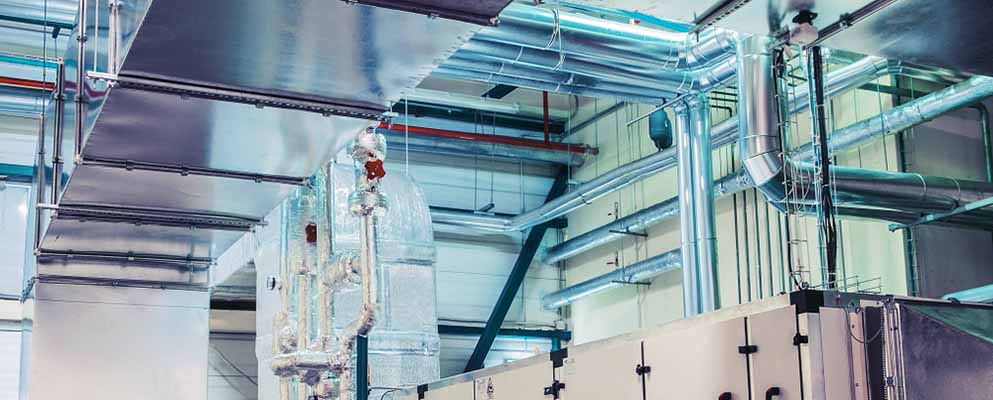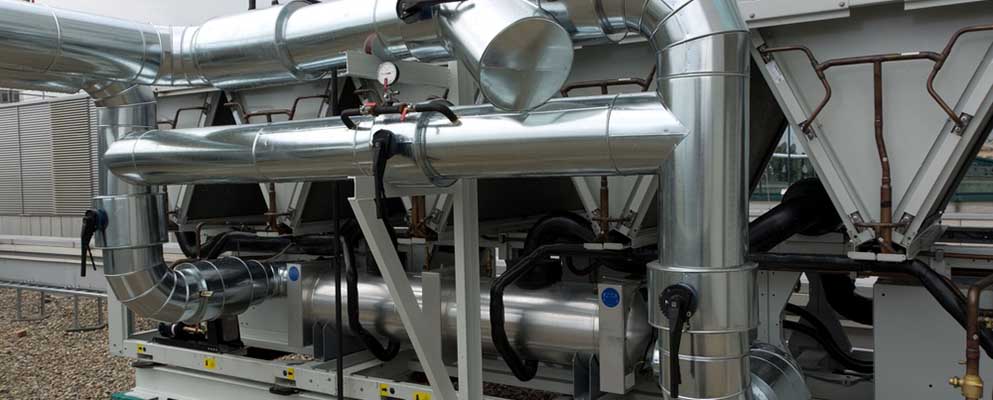
DIFFERENCES BETWEEN A PROCESS CHILLER VS. HVAC CHILLER

Countless industrial processes generate heat energy as a by-product. Given that most manufacturing processes require specific operating temperatures, the heat generated by process reactions may have undesirable consequences for finished products or process equipment.
To achieve maximal productivity, heat-generating manufacturing processes will require suitable temperature regulation which can be done using different types of chillers.
Among the most popular cooling options are process chillers and heat, ventilation and conditioning (HVAC) chillers. The key differences between both systems are highlighted in this article.
What Is an HVAC System?
An HVAC system is a thermal regulatory device that combines the functions of heating, air circulation, and its conditioning. These devices use the principles of fluid dynamics and the exchange of thermal energy to achieve cooling.
HVAC systems can be modified to provide temperature regulation for a broad range of environments including residential buildings and industrial manufacturing spaces.
How Does an HVAC System Work?
Depending on operator requirements, HVACs will provide one or more of three basic functions of heat generation, ventilation, and air conditioning.
Heat Generation
HVAC systems incorporate a heating element which generates and circulates heated air through the connected building structure. HVAC systems typically have a central heating component that is powered by a solid, liquid or gaseous fuel.
Ventilation
The ventilation component of a standard HVAC unit functions to constantly refresh the air circulating within the building to which it is attached. Ventilation may be achieved using a natural air conduit or a mechanical device called an air handler unit.
Regardless of type opted for, an efficient ventilator will remove gaseous contaminants and excess moisture from air circulating within a building’s interior. This exhausted air will be replaced with fresh air pulled from the external environment.
Air Conditioning
The air conditioning component of an HVAC system facilitates its cooling function while regulating humidity levels at an optimum. The air-conditioning system typically incorporates a refrigeration unit that chills circulating air while the unit pulls warm air out of the supplied space.
What Is a Process Chiller?
A process chiller is a thermal device that removes heat generated by a given process. This cooling equipment repeatedly conducts chilled water through a closed-loop to allow a drop in rising process temperatures. The heated water is then circulated through a chiller unit and undergoes a continuous cycle of refrigeration/absorption while removing heat from the associated process. Compressing a liquid from its vaporized form during this cycle will compound the cooling effect.
How Does a Process Chiller Function?
Most process chillers utilize the physical properties of their fluid components to accomplish cooling. The two main chiller working principles are absorption of heat or vapor-compression.
Heat Absorption Chillers
Absorption chillers are energy-efficient cooling units that circulate coolant through a heated process in a single cycle of cooling. The most commonly used refrigerant in these chiller types is lithium bromide.
Vapor Compression Chillers
The components of a vapor compression chiller include a compressor unit. The compressor generates its cooling effect by transforming a heated refrigerant vapor into it a cooler liquid form. Dependent on the manufacturer, vapor-compression chiller systems usually have pre-installed with evaporative or air/water-cooled condensers.
Different cooling system setups can leverage similar components. To explore how these components differ, check out the following guides:
- Evaporative Condenser vs. Cooling Tower
- Chiller vs. Heat Exchanger
- Air-cooled Chiller vs. Water-cooled Chiller

Process Chiller vs. HVAC Chiller System
Conventional chiller systems and HVAC chillers have various distinctions in terms of design and operation. The most important differences are outlined below.
Water/Refrigeration Circuitry
Most process chillers come with independent refrigeration and water circuits. This separation is important in cases of component failure. If one circuit fails, the system can still operate at half its usual capacity.
By comparison, the typical setup of an HVACs is a single combined cooling unit whose components cannot function independently of one another.
Seasonal Usage Fluctuations
In cold weather, the air conditioning component of an HVAC system becomes redundant as air cooling is not required. Chiller systems can, however, be modified to provide heating and thus remain fully operational regardless of prevailing weather conditions.
Component Integration
Industrial process chillers typically come with fully integrated pumps, storage tanks, and thermoregulatory controls. Most HVAC systems are not assembled with these vital add-on components. This results in a higher overall set up cost for a HVAC system as each additional component drives up the purchase and installation costs.
Process Applications
Industrial chillers are built to handle the cooling of various manufacturing processes (brewery cooling, hydroponic cooling, plastics cooling) directly. Conventional HVACs are built to regulate the environmental temperatures within designated spaces. While they are equally employed for industrial settings, process chillers are preferred to HVACs when direct process cooling is required.
Trust Cold Shot Chillers for Your Process Cooling Requirements
For over three decades, Cold Shot Chillers has been building and supplying top quality air-cooled chillers and water chillers for customers like you. To learn more about how we can help meet your process cooling needs, please contact us online today!